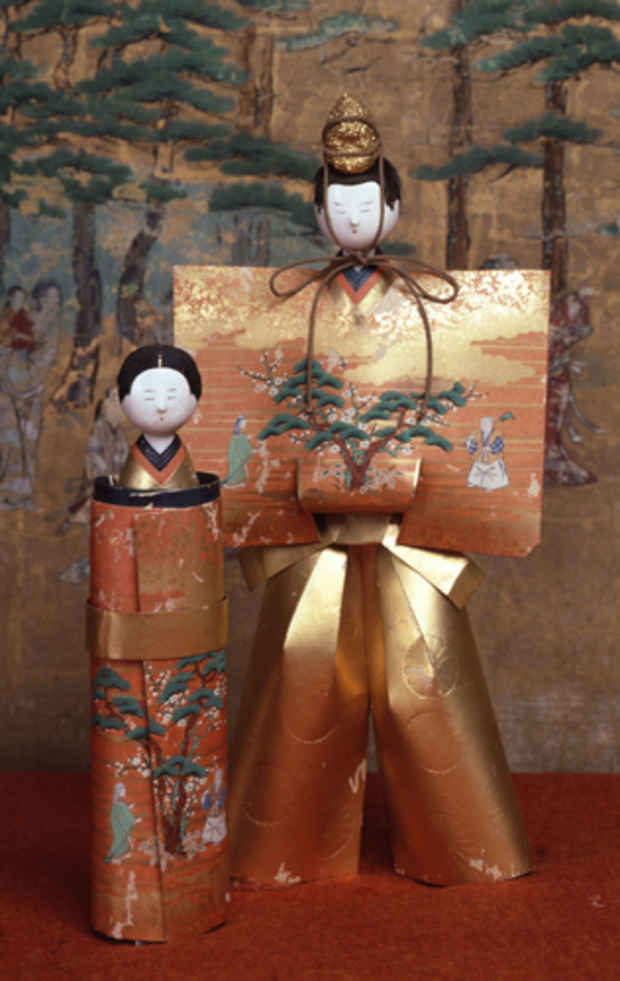"Hina Matsuri and Japanese Dolls" Exhibition
Kyoto National Museum

This event has ended.
Although seated hina ningyo-or Girls’ Day dolls-have become mainstream in Japan today, many families traditionally decorated their homes with standing hina dolls such as these. Since these hina dolls could not stand on their own, they were often propped against a wall or some other support. In time, seated hina dolls called "Kan'ei hina" (hina dolls of the Kan’ei era) appeared and thereafter, throughout the Edo period, various seated hina dolls such as the "Kyoho hina," "Jirozaemon hina," and "Kokin bina" came into fashion.
Towards the end of the Edo period, the union of male and female dolls came to represent a ceremonial marriage. Attendants and wedding accoutrements became part of the bridal display, leading to the creation of the lavish multi-tiered display that can be seen in some homes today. This style of arranging the dolls on tiers originated in Edo (present-day Tokyo) and also became widespread in Kyoto and Osaka. In this region, though, most families displayed two low tiers and placed a "palace" on the top tier where the dolls live as the emperor and empress.
*Exhibiting at the collection hall, galleries 17
[Image: "Tachi-bina Dolls" courtesy of Kyoto National Museum]
Media
Schedule
from February 23, 2008 to March 30, 2008